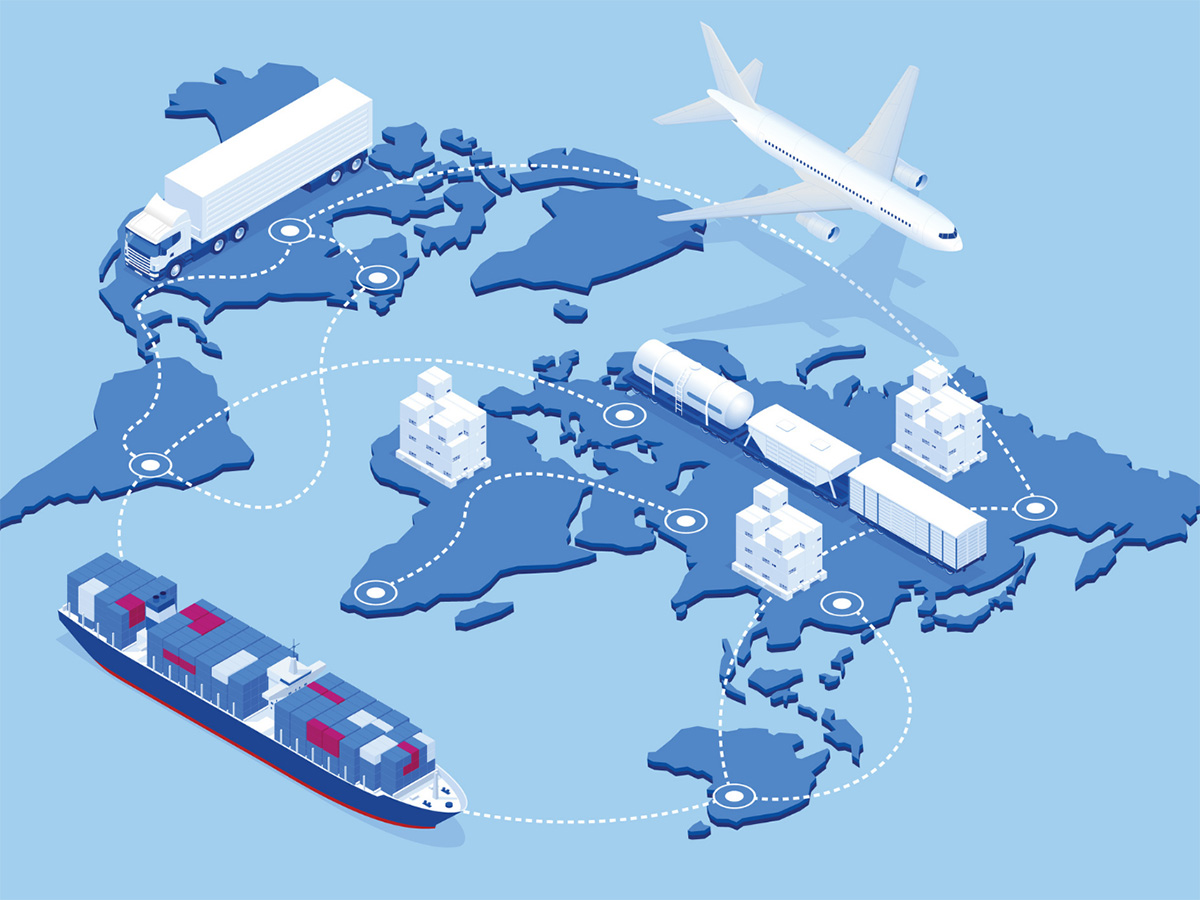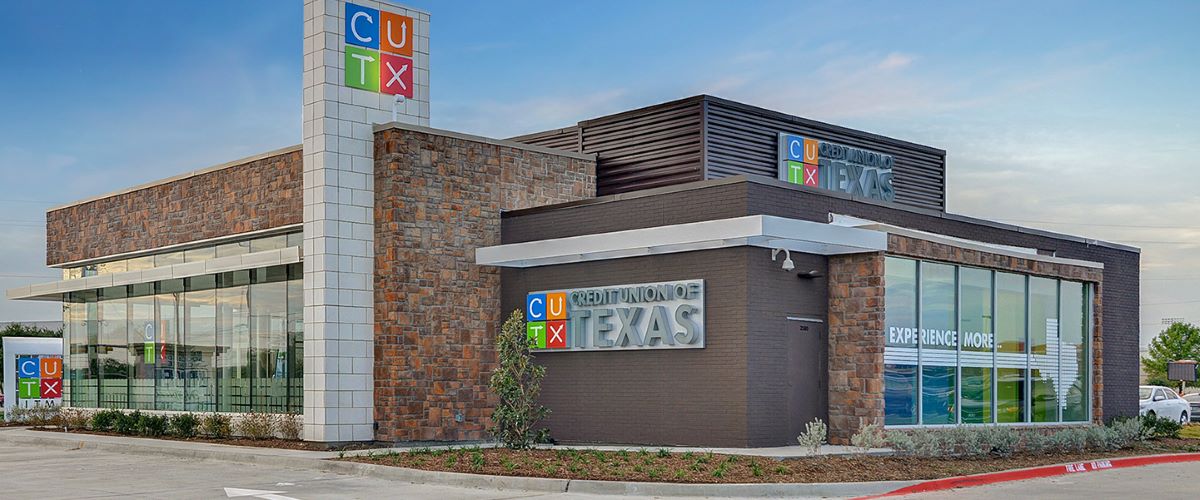Home>Finance>Where Would You Find The Customers In A Typical Supply Chain?


Finance
Where Would You Find The Customers In A Typical Supply Chain?
Published: October 19, 2023
Discover how finance plays a crucial role in identifying and attracting customers within the complex framework of a typical supply chain.
(Many of the links in this article redirect to a specific reviewed product. Your purchase of these products through affiliate links helps to generate commission for LiveWell, at no extra cost. Learn more)
Table of Contents
Introduction
In any typical supply chain, understanding the location of customers is crucial for businesses to effectively connect with and serve their target market. Customers play a vital role in the supply chain ecosystem as they are the ultimate consumers of goods and services. Identifying where customers are located within the supply chain allows businesses to optimize their operations, tailor their offerings to meet customer needs, and implement targeted marketing strategies.
In this article, we will explore the different locations where customers can be found within a typical supply chain. We will delve into the concept of direct and indirect customers, as well as discuss customer touchpoints, key factors influencing customer locations, and the role of marketing in identifying these locations.
By gaining insights into customer locations, businesses can enhance their supply chain management, streamline logistics, and develop customer-centric strategies that drive growth and profitability.
Join us as we uncover the intricate web of the supply chain and discover where customers are positioned within it.
Understanding the Supply Chain
Before diving into the locations of customers within the supply chain, let’s first establish a foundational understanding of what the supply chain entails. In simple terms, the supply chain is a network of interconnected organizations, activities, resources, and processes involved in the production, distribution, and delivery of goods or services to the end customer.
The supply chain encompasses various stages, starting from sourcing raw materials, manufacturing or creating products, warehousing and storage, transportation and logistics, and finally reaching the end customer. It involves a series of interconnected steps that are carefully orchestrated to ensure an efficient and seamless flow of products or services.
The broader supply chain network can be divided into different tiers, each representing different entities or parties involved in the process. These tiers include suppliers, manufacturers, distributors, retailers, and ultimately, the customers themselves.
Understanding the supply chain is essential because it allows businesses to gain insight into how each stage impacts customer experience and satisfaction. By comprehending the entire supply chain landscape, businesses can identify opportunities to improve efficiency, reduce costs, and enhance customer value.
Now that we have established a basic understanding of the supply chain, let’s proceed to explore where customers are positioned within this intricate system.
Exploring Customer Locations within the Supply Chain
Customers can be found at different stages and locations within the supply chain. Understanding these customer touchpoints is crucial for businesses to effectively serve their target market and deliver value. Let’s explore two main categories of customer locations: direct customers and indirect customers.
Direct Customers
Direct customers refer to the end users or consumers who purchase and use the products or services directly from the business. These customers are typically the final link in the supply chain and play a vital role in driving demand for the products or services. For example, in the retail industry, direct customers are the individuals or households who purchase goods from the stores or online platforms.
Direct customers can be further classified into different segments based on their demographics, preferences, and buying behaviors. This segmentation allows businesses to tailor their marketing and sales strategies to meet the unique needs of each customer segment, ultimately improving customer satisfaction and loyalty.
Indirect Customers
Indirect customers, on the other hand, are the entities or businesses that purchase products or services from the business but do not consume them directly. Instead, they may use or resell the products as part of their own operations or supply chain.
For example, in the manufacturing industry, a company may purchase raw materials and components from suppliers to create a finished product. In this case, the company acts as an indirect customer to the suppliers. Similarly, wholesalers and distributors who purchase goods from manufacturers and sell them to retailers are also considered indirect customers.
Identifying indirect customers and understanding their needs and requirements is crucial for businesses to optimize their supply chain operations. By understanding the demand patterns and preferences of indirect customers, businesses can forecast future demand, plan production and inventory levels, and ensure smooth flow of products within the supply chain.
Now that we have explored the concept of direct and indirect customers, let’s move on to understanding customer touchpoints within the supply chain.
Direct Customers
Direct customers are the end users or consumers who purchase and use products or services directly from the business. These customers play a vital role in driving demand and are typically the ultimate target of marketing efforts. Understanding direct customers is essential for businesses to tailor their offerings, marketing strategies, and customer experiences to meet their needs and preferences.
Direct customers can be found at various touchpoints within the supply chain, depending on the nature of the business and industry. Here are some common examples:
Retailers:
In industries such as fashion, electronics, and consumer goods, direct customers often make their purchases from retail stores or online platforms. Retailers serve as intermediaries between the business and the end consumer, offering a curated selection of products and providing a convenient shopping experience. Understanding the preferences and buying behaviors of customers in the retail sector is crucial for businesses to optimize their distribution channels and ensure their products are readily available to the target market.
Service Providers:
For businesses in the service industry, direct customers are individuals or organizations that directly utilize the services provided. Examples include healthcare providers, financial institutions, consulting firms, and transportation companies. Understanding the specific needs and expectations of direct customers in these sectors is crucial for service providers to deliver high-quality services and create positive customer experiences.
Business-to-Business (B2B) Customers:
In B2B industries, direct customers are other businesses that purchase products or services to support their own operations or incorporate them into their own offerings. This can range from manufacturers sourcing raw materials and components to wholesalers purchasing goods for distribution. Building strong relationships with B2B customers and understanding their unique requirements is essential for businesses to establish long-term partnerships and drive mutual growth.
Identifying direct customers within the supply chain allows businesses to analyze their purchasing behaviors, preferences, and needs. This information can be used to develop targeted marketing campaigns, optimize product offerings, and improve customer satisfaction. By focusing on providing value to their direct customers, businesses can enhance customer loyalty, increase sales, and foster long-term success.
Indirect Customers
In addition to direct customers, businesses also have a significant relationship with indirect customers within the supply chain. Indirect customers are entities or businesses that purchase products or services from the business but do not consume them directly. Instead, they may use or resell the products as part of their own operations or supply chain.
Understanding and catering to the needs of indirect customers is crucial for businesses to optimize their supply chain operations and facilitate efficient product flow. Here are some examples of indirect customers:
Suppliers:
Suppliers play a critical role in the supply chain as they provide businesses with the necessary raw materials, components, or services needed for production. Suppliers may be considered indirect customers as they purchase goods or services from other businesses to support their own operations. Building strong relationships with suppliers is crucial for businesses to ensure a smooth flow of inputs and maintain reliable sourcing channels.
Wholesalers and Distributors:
Wholesalers and distributors act as intermediaries between manufacturers and retailers. They purchase goods in bulk from manufacturers and resell them to retailers who then make them available to the end consumers. Understanding the demand patterns and requirements of wholesalers and distributors is essential for businesses to optimize inventory levels, plan production, and establish efficient distribution networks.
Service Providers:
In some industries, businesses may rely on external service providers to support their operations. These service providers can include logistics companies, IT support services, marketing agencies, and more. Understanding the needs and expectations of these indirect customers is crucial for businesses to ensure smooth collaboration and effective delivery of services.
By recognizing the role of indirect customers in the supply chain, businesses can actively engage with them, build strong partnerships, and align their operations to meet their specific needs. By doing so, businesses can optimize their supply chain, enhance efficiency, and ultimately deliver value to both direct and indirect customers.
Identifying Customer Touchpoints
Customer touchpoints are the interactions and points of contact between customers and businesses within the supply chain. Identifying these touchpoints is essential for businesses to understand the various stages and opportunities for engagement with their customers. By analyzing and optimizing these touchpoints, businesses can enhance the customer experience, build stronger relationships, and drive customer loyalty.
Here are some key customer touchpoints within the supply chain:
Pre-Purchase Touchpoints:
These touchpoints occur before a customer makes a purchase decision. They can include advertising, social media interactions, website visits, product research, and customer reviews. Understanding and optimizing these touchpoints can help businesses attract and engage potential customers, create brand awareness, and influence purchase decisions.
Purchase Touchpoints:
The purchase touchpoints refer to the actual transactional interactions between customers and businesses. These can include online or in-store purchases, order confirmation, payment processes, and customer service during the buying process. Ensuring a smooth and seamless purchasing experience is crucial for businesses to drive customer satisfaction and repeat purchases.
Post-Purchase Touchpoints:
After a purchase is made, businesses can engage with customers through post-purchase touchpoints. These can include order tracking, delivery notifications, product support, warranty registration, and soliciting feedback or reviews. By actively engaging with customers post-purchase, businesses can enhance customer satisfaction, address any issues timely, and foster long-term loyalty.
Customer Service Touchpoints:
Customer service touchpoints occur when customers reach out to businesses for assistance or support. This includes interactions with customer service representatives via phone, email, or online chat. Building a strong customer service infrastructure is crucial for businesses to provide timely and effective resolutions to customer inquiries, complaints, or issues.
Identifying customer touchpoints allows businesses to focus on optimizing these interactions to deliver a seamless and enjoyable customer experience. By understanding where these touchpoints occur and their impact on customer satisfaction, businesses can tailor their strategies, implement personalized marketing approaches, and build stronger customer relationships throughout the supply chain.
Key Factors Influencing Customer Locations in the Supply Chain
Several key factors influence the locations where customers can be found within the supply chain. Understanding these factors is crucial for businesses to effectively position themselves and connect with their target audience. Here are some of the key factors that influence customer locations in the supply chain:
Market Demographics:
Market demographics, including factors such as age, gender, income level, and geographic location, play a significant role in determining customer locations within the supply chain. Businesses need to identify where their target market resides and tailor their operations and marketing strategies accordingly to reach and serve these customers effectively.
Market Demand and Trends:
The demand for products and services can vary based on trends, preferences, and evolving consumer needs. Identifying and understanding these market demands and trends can influence where customers are located within the supply chain. For example, if there is a growing demand for online shopping, businesses may need to focus on establishing an e-commerce presence to reach customers in that channel.
Competitive Landscape:
The competitive landscape in the industry can impact customer locations within the supply chain. Businesses need to assess where their competitors are located and how they are targeting customers. This information helps them identify gaps and opportunities to position themselves strategically and differentiate their offerings to attract customers.
Infrastructure and Logistics:
The availability and quality of transportation, storage, and distribution infrastructure can influence customer locations within the supply chain. Businesses need to consider factors such as proximity to transportation hubs, warehousing facilities, and efficient logistics networks to ensure timely delivery and meet customer expectations.
Regulatory and Legal Considerations:
Regulatory and legal considerations, such as trade policies, import/export regulations, and tax laws, can impact customer locations. Businesses must be aware of these factors and understand how they may affect their ability to serve customers in specific regions or countries.
Cultural and Social Factors:
Cultural and social factors, including language, customs, and preferences, can influence customer locations within the supply chain. Businesses must take into account these cultural nuances and adapt their products, marketing messages, and customer service to resonate with customers in different regions or cultural contexts.
By considering these key factors, businesses can strategically position themselves in the supply chain and identify the locations where their target customers are concentrated. This understanding enables businesses to allocate resources effectively, tailor their offerings, and implement targeted marketing strategies to maximize customer reach and engagement.
The Role of Marketing in Identifying Customer Locations
Marketing plays a crucial role in identifying customer locations within the supply chain. By leveraging various marketing strategies and tools, businesses can gain insights into where their target customers are located and effectively connect with them. Here are some ways in which marketing aids in identifying customer locations:
Market Research:
Market research is a fundamental marketing activity that helps businesses understand their target market, including their demographics, preferences, and geographic locations. Through surveys, focus groups, and data analysis, businesses can gather valuable information about their customers’ locations and tailor their marketing efforts accordingly.
Data Analytics:
Data analytics provides businesses with the capability to analyze customer data and identify patterns and trends. By analyzing purchase behavior, location data, and other relevant metrics, businesses can gain insights into customer locations and target specific geographic areas with precision. Data analytics also allows businesses to measure the effectiveness of marketing campaigns and make data-driven decisions to optimize customer reach.
Geotargeting:
Geotargeting is a marketing technique that allows businesses to target specific audiences based on their geographic location. By utilizing geolocation data from various sources, such as IP addresses or mobile device location services, businesses can deliver customized marketing messages to customers in specific regions. Geotargeting helps businesses maximize the impact of their marketing efforts by reaching customers in the right locations with personalized content.
Market Segmentation:
Market segmentation is the process of dividing a broad target market into smaller, more focused segments based on various criteria, including geographic location. By segmenting the market based on customer locations, businesses can tailor their marketing strategies to better address the unique needs, preferences, and trends in different regions. This allows for more targeted messaging and the ability to connect with customers on a more personal level.
Online Marketing Platforms and Tools:
Online marketing platforms, such as search engine advertising, social media advertising, and display advertising, offer businesses the ability to target customers based on their search behavior, interests, and geographic location. These tools provide businesses with the means to reach customers in specific locations and drive targeted traffic to their websites or physical stores.
By leveraging marketing strategies, tools, and technologies, businesses can gain valuable insights into customer locations within the supply chain. This allows them to allocate resources effectively, optimize their marketing efforts, and tailor their products and services to meet the specific needs of customers in different locations.
Conclusion
Understanding where customers are located within the supply chain is crucial for businesses to effectively connect with their target audience, optimize their operations, and drive growth. By recognizing the locations of direct and indirect customers, businesses can tailor their offerings, marketing strategies, and customer experiences to meet their needs and preferences.
Direct customers, the end users or consumers, can be found at various touchpoints within the supply chain. Identifying direct customers allows businesses to analyze their purchasing behaviors, demographics, and preferences. This information can be used to develop targeted marketing campaigns, optimize product offerings, and enhance customer satisfaction.
Indirect customers, on the other hand, play a significant role in the supply chain as businesses rely on them for the smooth flow of products or services. Identifying and understanding the needs of indirect customers, such as suppliers, wholesalers, and service providers, enables businesses to optimize their supply chain operations and facilitate efficient product flow.
Recognizing customer touchpoints within the supply chain allows businesses to streamline their operations and enhance the customer experience. Pre-purchase, purchase, post-purchase, and customer service touchpoints provide opportunities for businesses to engage with customers, provide personalized experiences, and build stronger relationships.
Several key factors influence customer locations within the supply chain, including market demographics, demand trends, competitive landscape, infrastructure, and regulatory considerations. By considering these factors, businesses can strategically position themselves and connect with their target customers more effectively.
Marketing plays a pivotal role in identifying customer locations within the supply chain. Through market research, data analytics, geotargeting, market segmentation, and online marketing platforms, businesses can gain valuable insights into customer locations and optimize their marketing strategies.
In conclusion, understanding customer locations within the supply chain is vital for businesses aiming to deliver value, improve customer satisfaction, and drive business growth. By actively engaging with direct and indirect customers at various touchpoints, businesses can enhance supply chain management, build strong customer relationships, and stay ahead in today’s competitive marketplace.














